Sizzling Middle Eastern Kebabs Recipe: A Flavor Adventure
Succulent spices and smoky charcoal whisper stories of ancient culinary traditions in these Middle Eastern kebabs.
Tender meat marinated with aromatic herbs speaks volumes about regional cooking techniques.
Generations of cooks have perfected these delectable skewers passed down through generations.
Each bite brings warmth and connection to vibrant street markets and family gatherings.
The blend of spices creates a symphony of flavors that dance across your palate.
Crisp edges and juicy centers promise a memorable meal that transports you to bustling bazaars.
Prepare to embark on a delicious journey through the heart of Middle Eastern cuisine.
What Makes Middle Eastern Kebabs Special
Ingredients for Middle Eastern Kebabs
Main Protein:Aromatics:Seasonings and Binders:Optional Finishing Touch:Preparing Middle Eastern Kebabs Easily
Step 1: Chop Aromatic Herbs
Grab a sharp knife and finely mince fresh parsley and garlic.
The herbs will add a burst of vibrant flavor to your kebabs.
Toss the chopped herbs into a large mixing bowl.
Step 2: Process Onion Magic
Pulse the onion in a food processor until finely chopped.
Spread the processed onion on a paper towel and squeeze out excess moisture.
Save the onion liquid for later.
Add the drained onion to the mixing bowl.
Step 3: Spice Up the Mixture
Introduce a blend of spices to the meat:Mix everything thoroughly until the spices are evenly distributed throughout the meat.
Step 4: Chill and Marinate
Cover the meat mixture and pop it into the refrigerator.
Let it rest for about 45 minutes.
This cooling time allows the flavors to meld and makes the meat easier to shape.
Step 5: Shape Kebab Goodness
Moisten your hands with the reserved onion liquid to prevent sticking.
Carefully mold the meat mixture onto skewers, creating uniform shapes for even cooking.
Step 6: Grill to Perfection
Heat your grill to medium-low temperature.
Carefully place the kebabs on the grill.
Cook until they’re fully done, with a beautiful golden-brown exterior.
For an extra touch of richness, brush with melted butter or ghee just before serving.
Handy Pointers for Middle Eastern Kebabs
Middle Eastern Kebabs Fresh Twists
Creative Serving of Middle Eastern Kebabs
Perfect Kebab Companions: Flavor Boosters
How to Keep Middle Eastern Kebabs Tasty
FAQs
Removing excess liquid prevents kebabs from becoming soggy and helps the meat bind together better, creating a more compact and juicy texture.
Baking soda helps break down protein fibers in the meat, making the kebabs more tender and giving them a softer, more delicate texture.
Absolutely! Ground lamb is traditional in Middle Eastern cuisine and will provide a richer, more authentic flavor profile for the kebabs.
Use a meat thermometer to check the internal temperature reaches 160°F (71°C) for ground meat, ensuring it’s safe to eat while maintaining its juiciness.
Print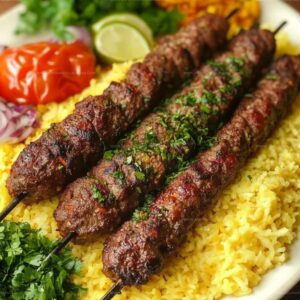
Middle Eastern Kebabs Recipe
- Total Time: 35 minutes
- Yield: 4 1x
Description
Savor Middle Eastern kebabs, a delicious journey through aromatic spices and grilled perfection. Tender marinated meats blend traditional flavors, inviting you to experience culinary magic from the heart of the region.
Ingredients
Meat:
- 1 pound (454 grams) ground beef (80% lean / 20% fat)
- 1 pound (454 grams) ground lamb (or substitute with additional beef)
Aromatics and Herbs:
- 1/2 bunch fresh parsley, finely chopped
- 4 garlic cloves, minced
- 1/2 yellow onion, processed
Spices and Seasonings:
- 1 tablespoon garlic powder
- 1 tablespoon onion powder
- 1 tablespoon 7 spices (baharat)
- 1/2 tablespoon coriander powder
- 1 tablespoon sumac
- 1/2 tablespoon Aleppo pepper
- 1/4 tablespoon black pepper
- 2–3 teaspoons salt, or to taste
- 1/2 teaspoon baking soda
Optional:
- Melted butter or ghee for brushing
Instructions
- Thoroughly mince fresh parsley and garlic, combining them with ground meat in a spacious mixing container.
- Pulse onion in a food processor, then transfer to a paper towel and vigorously extract excess moisture, preserving the liquid for later use.
- Incorporate aromatic spices and baking soda into the meat mixture, kneading meticulously until ingredients are uniformly distributed.
- Refrigerate the seasoned mixture for approximately 45 minutes, allowing flavors to meld and protein to firm up for easier shaping.
- Moisten hands with reserved onion liquid to prevent sticking, then carefully mold meat mixture around skewers, ensuring even distribution and compact formation.
- Preheat grill to medium-low heat (around 350°F), positioning kebabs to ensure consistent cooking and prevent charring.
- Grill kebabs for 12-15 minutes, rotating periodically to achieve uniform browning and internal temperature of 160°F for ground meat.
- Optional: Brush with melted clarified butter or ghee during final minutes of grilling to enhance moisture and impart rich, golden exterior.
- Allow kebabs to rest for 3-5 minutes after removing from heat, enabling juices to redistribute and ensuring maximum tenderness.
Notes
- Keep meat cold to maintain protein structure and ensure juicy kebabs by chilling mixture before shaping.
- Use paper towel technique when processing onions to remove excess moisture, preventing soggy kebab texture.
- Add baking soda sparingly to help meat retain moisture and create tender, succulent kebab consistency.
- Try spice blends like za’atar or sumac for authentic Middle Eastern flavor variations without compromising meat’s juiciness.
- Prep Time: 20 minutes
- Cook Time: 15 minutes
- Category: Lunch, Dinner, Appetizer
- Method: Grilling
- Cuisine: Middle Eastern
Nutrition
- Serving Size: 4
- Calories: 468
- Sugar: 1 g
- Sodium: 300 mg
- Fat: 33 g
- Saturated Fat: 13 g
- Unsaturated Fat: 20 g
- Trans Fat: 0 g
- Carbohydrates: 6 g
- Fiber: 1 g
- Protein: 36 g
- Cholesterol: 100 mg

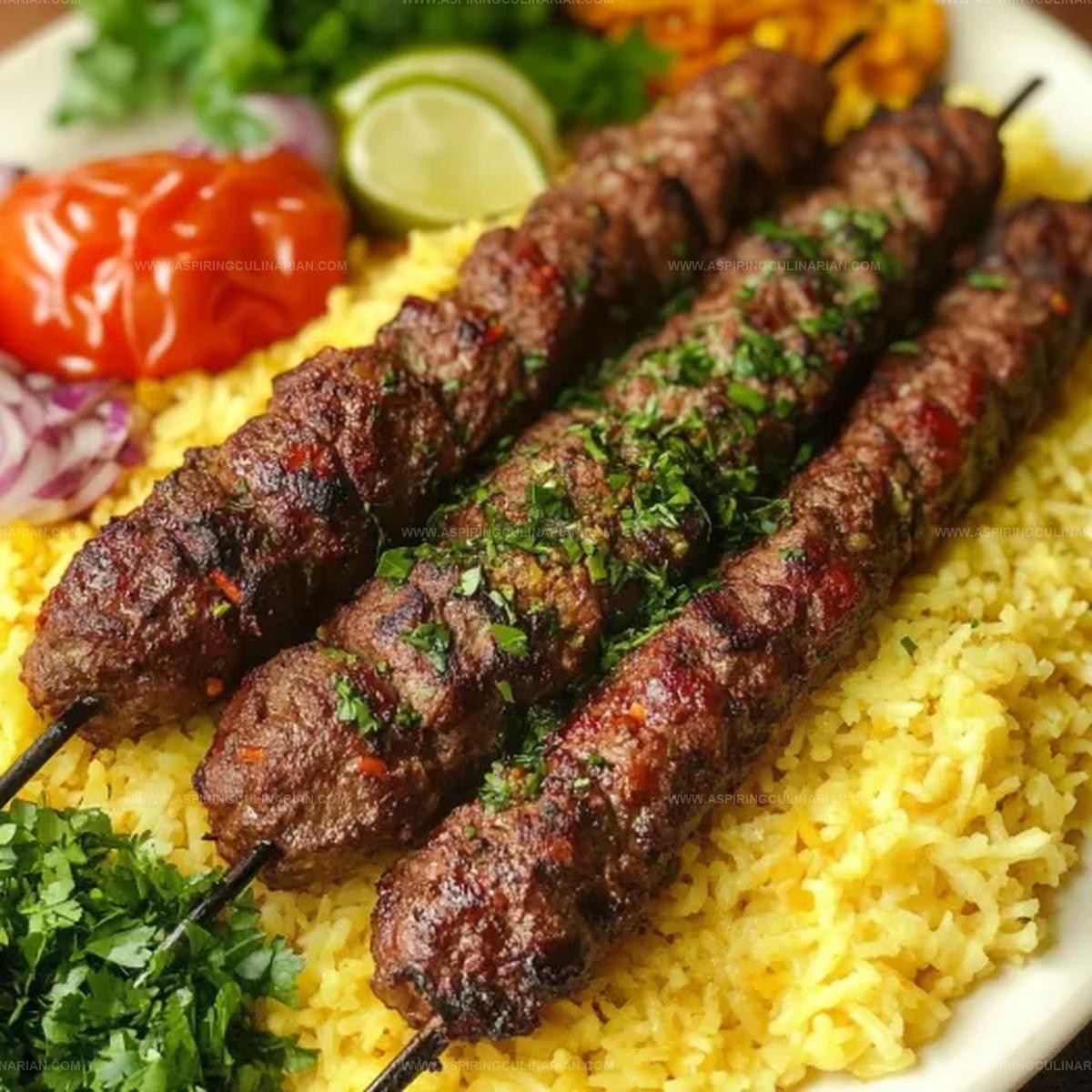
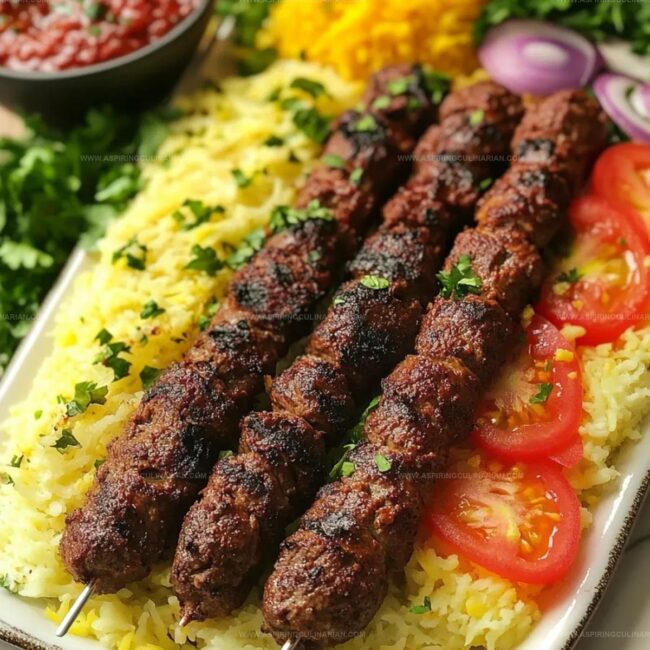
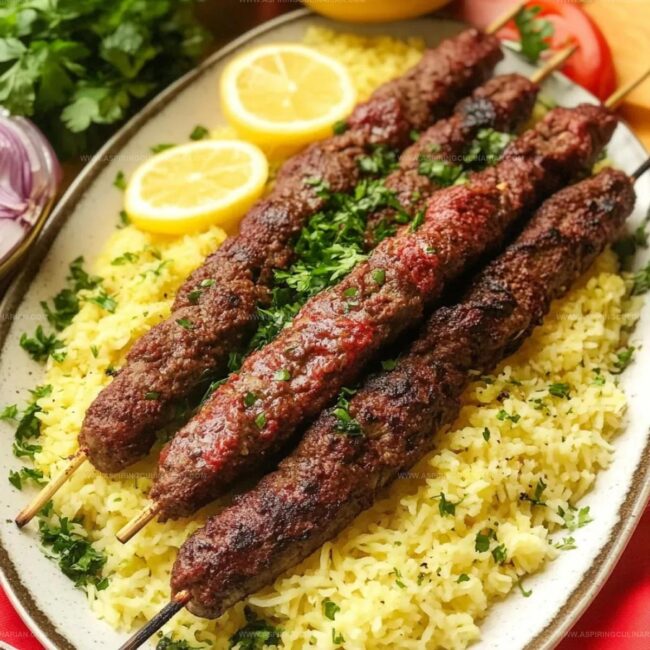
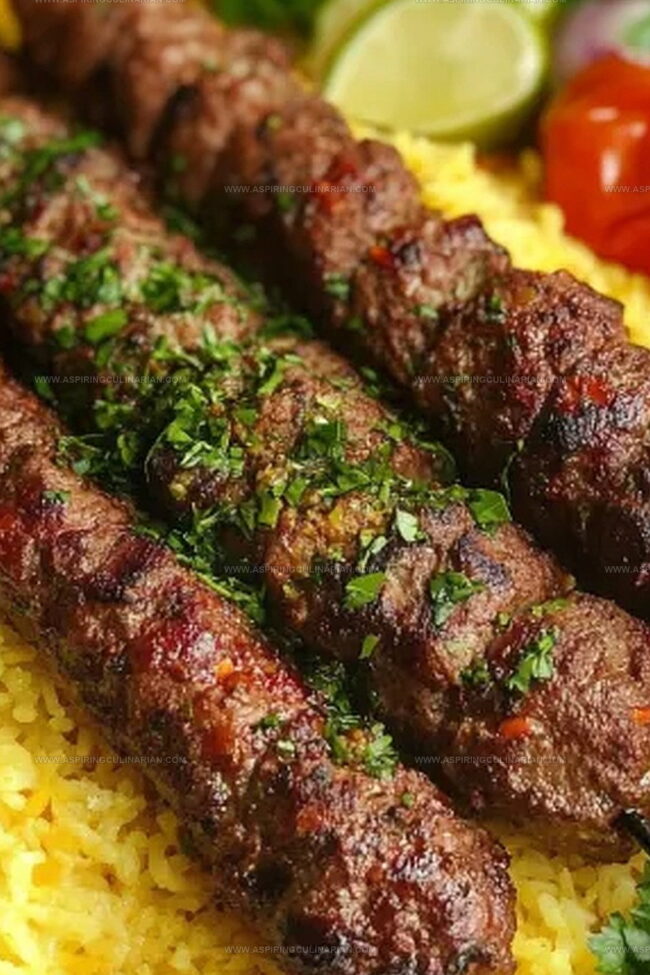
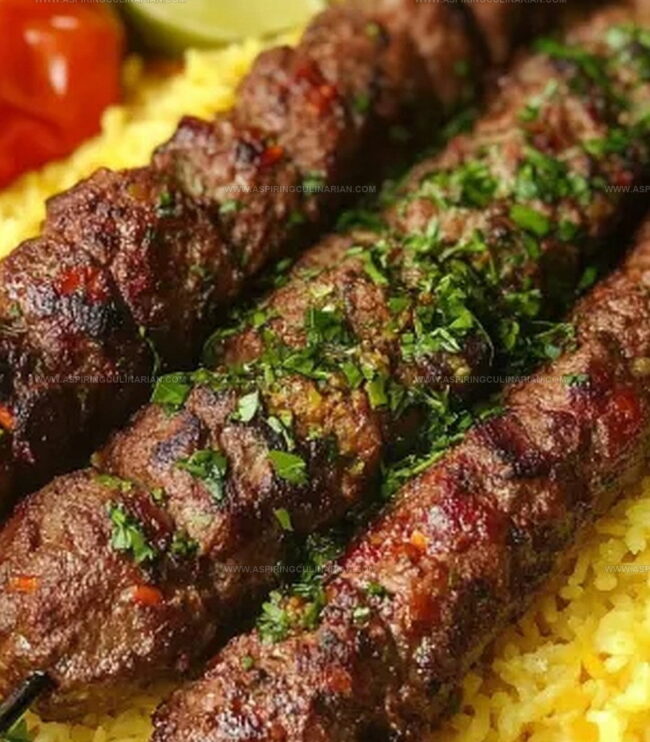
Lena Martinez
Contributing Writer & Culinary Educator
Expertise
Southwestern and Latin American cuisines, Vegetarian and plant-based recipe development, Culinary education and community outreach
Education
Santa Fe Community College, Santa Fe, NM
Certificate in Culinary Arts
Emphasized Southwestern cuisine and sustainable cooking practices
Lena grew up surrounded by the colors, spices, and traditions of the Southwest – flavors that sparked her love for bold, honest cooking. After earning her Culinary Arts certificate at Santa Fe Community College, she made it her mission to teach home cooks how to create flavorful, plant-powered meals without the fuss.
Her recipes are packed with vibrant ingredients, simple steps, and the kind of heart that turns a regular meal into something you’ll want to share. Outside the kitchen, Lena spends her time wandering farmers’ markets, trading family recipes, and helping young chefs find their voice through food.